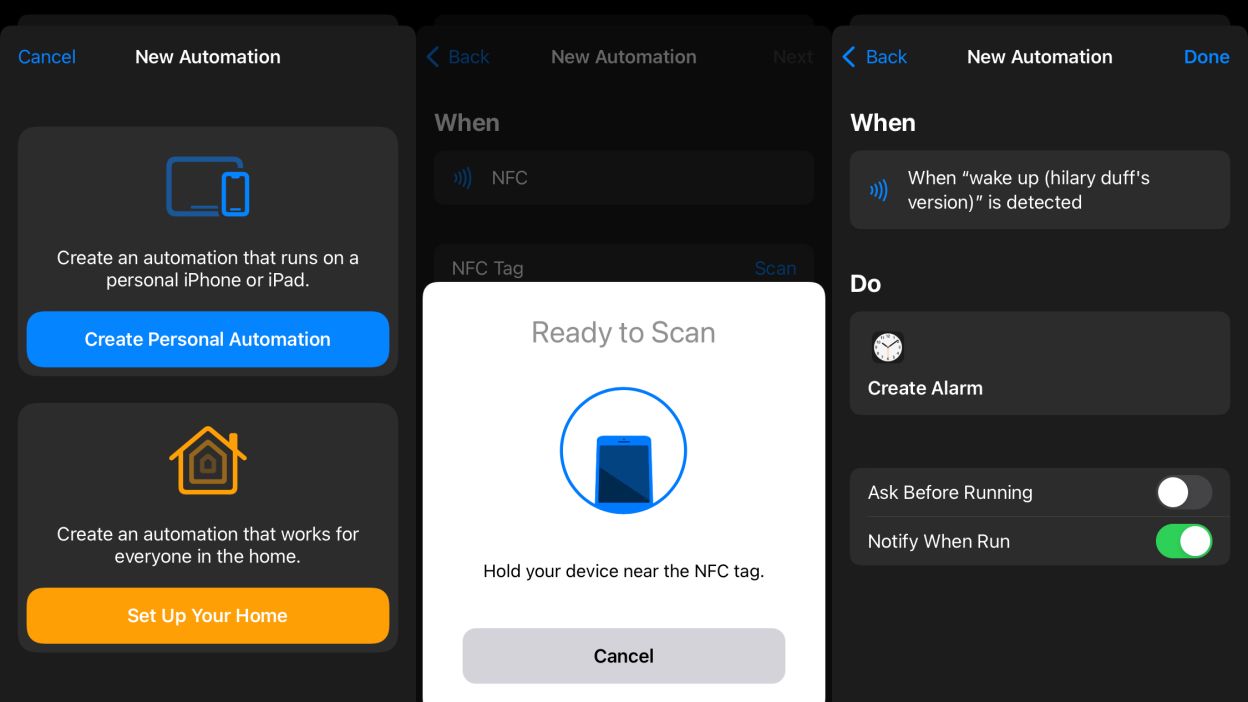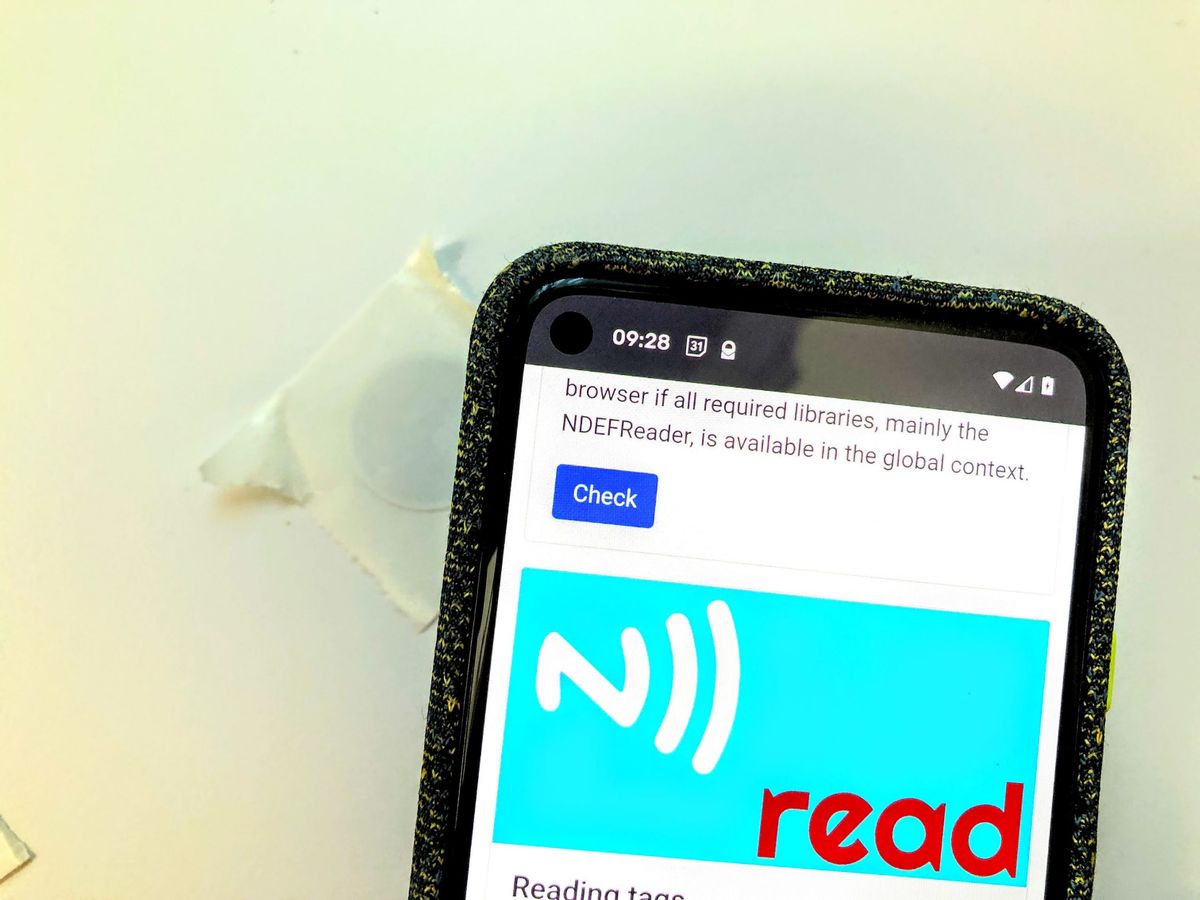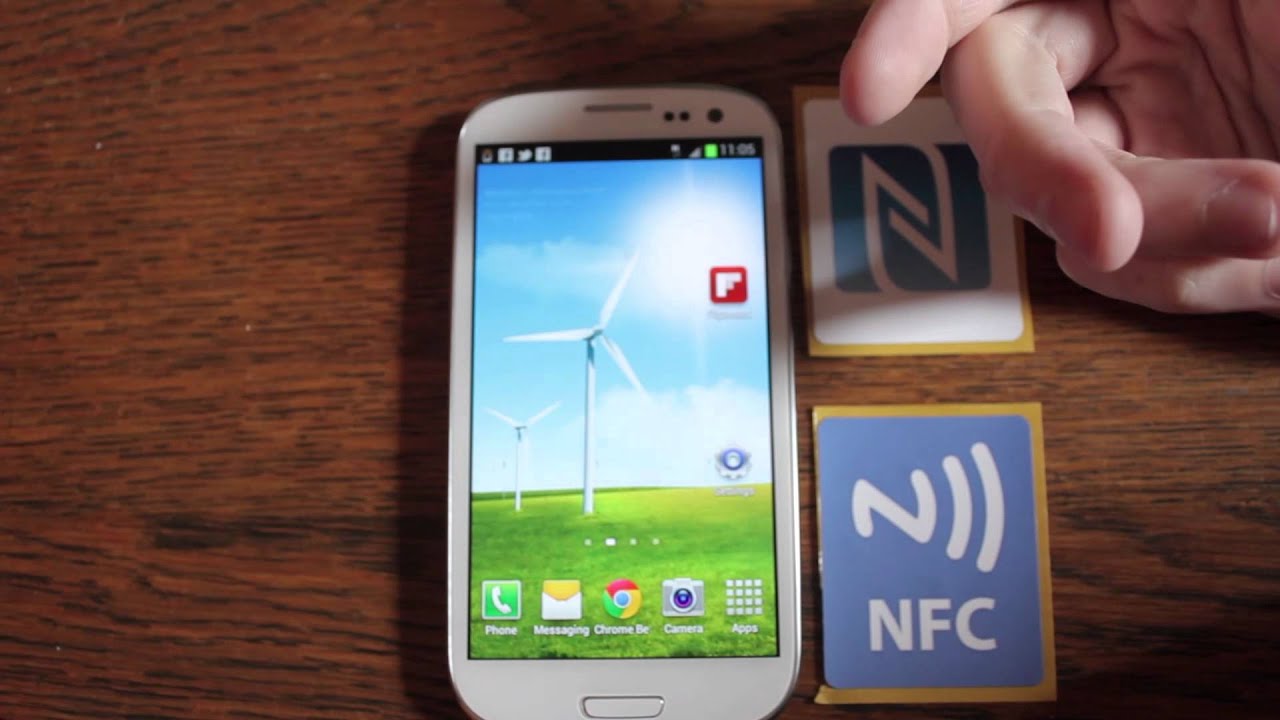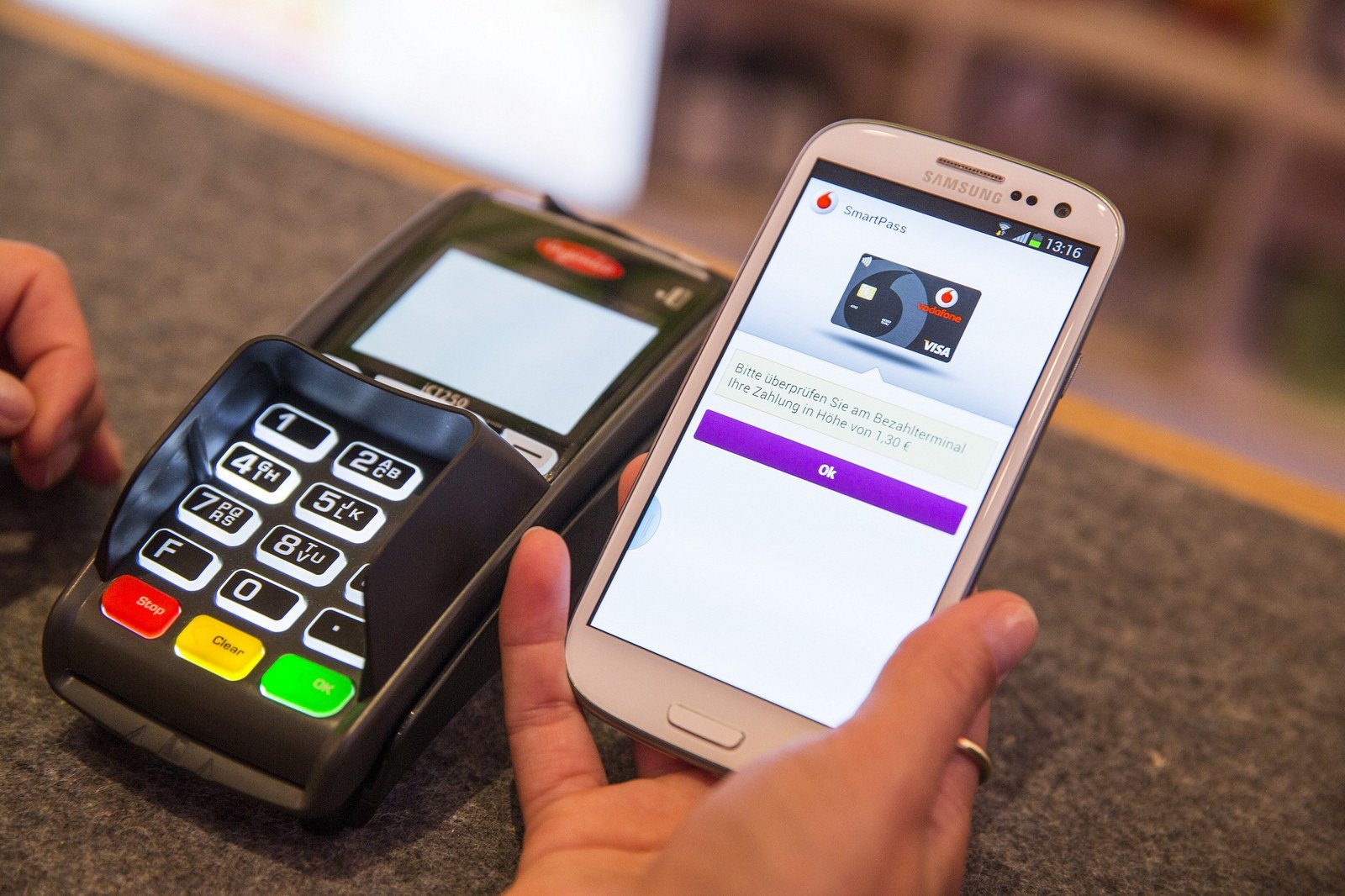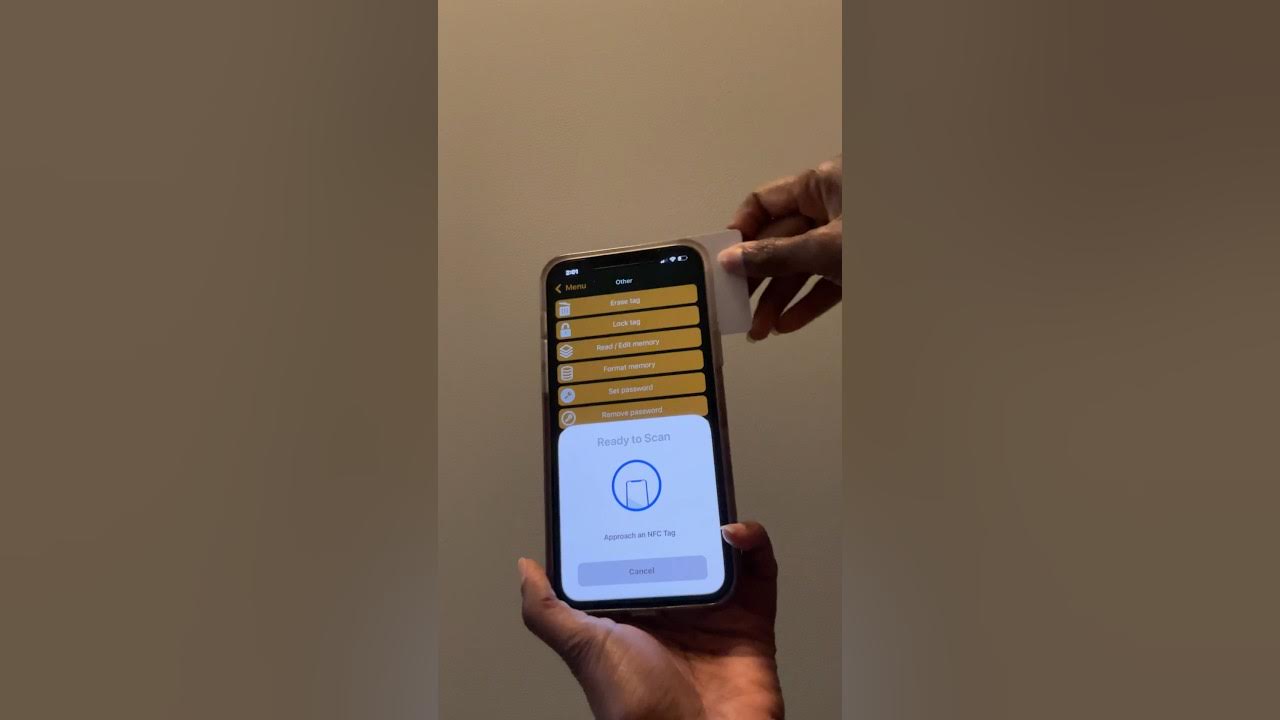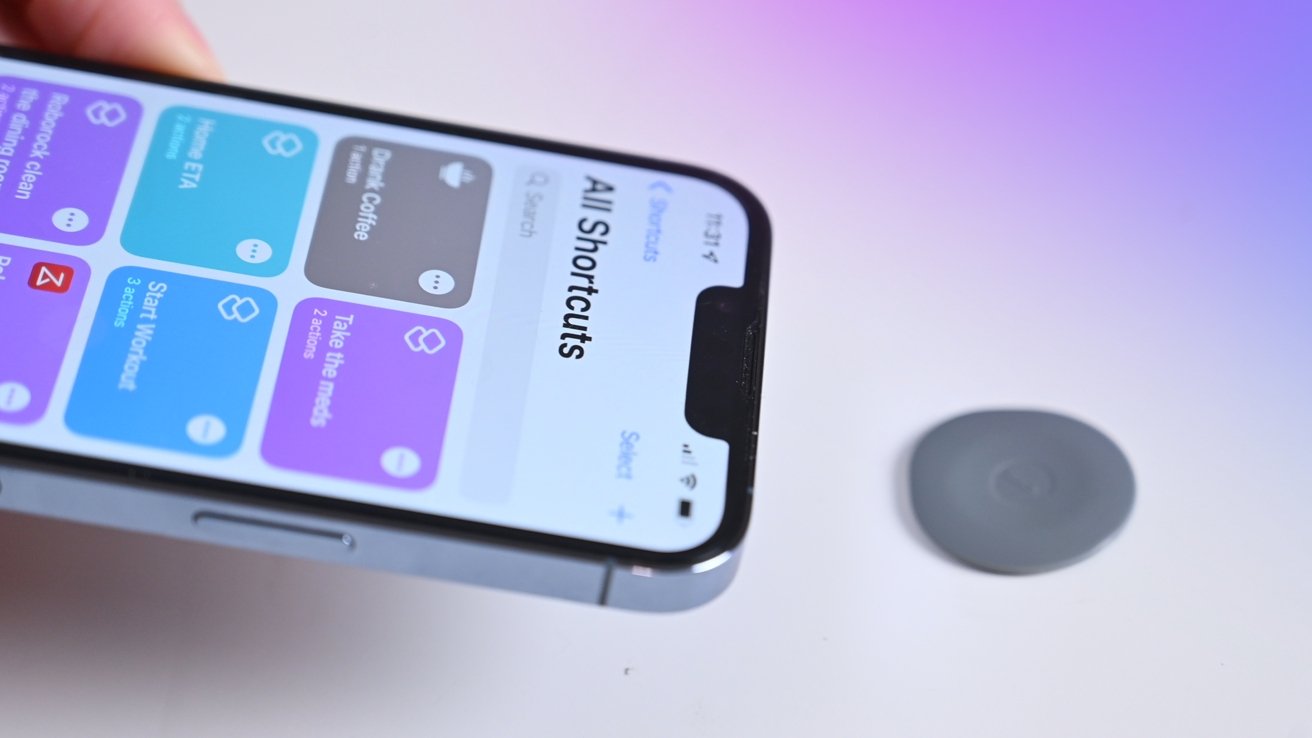Introduction
Near Field Communication, or NFC, is a technology that has become increasingly popular in recent years. It is a wireless communication technology that allows smartphones and other compatible devices to establish a connection and exchange data with other devices or NFC tags.
NFC technology is built into many smartphones today, making it a widely accessible feature for users. It offers a convenient way to transfer information, make payments, and interact with various electronic devices.
One of the key components of NFC technology is the NFC tag. NFC tags are small adhesive stickers or keychain-like tokens that are embedded with an integrated circuit (IC) and an antenna. These tags can be programmed to store specific information, such as URLs, contact details, or even perform specific actions when tapped with an NFC-enabled device.
In this article, we will explore the concept of NFC tags and their functionality. We will delve into the different types of NFC tags, how they work, and how they can be used with smartphones. We will also discuss the common applications of NFC tags and the benefits and limitations of this technology.
If you have ever wondered about the small NFC symbol on your smartphone or encountered NFC tags in your daily life, this article will provide you with a comprehensive understanding of what NFC tags are and how they can enhance your smartphone experience.
What is NFC?
Near Field Communication, commonly known as NFC, is a short-range wireless communication technology that allows devices to establish a connection and exchange data when they are in close proximity to each other. NFC operates on the principle of electromagnetic induction, enabling devices to communicate by simply touching or being within a few centimeters of each other.
NFC technology is widely used in various industries, including mobile payments, access control, transportation, and content sharing. It has gained popularity due to its simplicity, convenience, and security.
Unlike Bluetooth or Wi-Fi, which require pairing or network configuration, NFC enables devices to connect instantly by bringing them close together. This technology operates on high-frequency radio waves and can transfer data at a rate of up to 424 kbps.
NFC-equipped smartphones have an NFC chip, which allows them to read and transmit data to other NFC-enabled devices or NFC tags. In addition to smartphones, other devices such as tablets, smartwatches, and even credit cards can incorporate NFC technology.
The main advantage of NFC is its ease of use. It eliminates the need for physical contact or manual configuration to establish a connection between devices. Simply tapping an NFC-enabled device on another device or an NFC tag can trigger a variety of actions, such as opening a website, initiating a phone call, or making a payment.
NFC technology is built on a set of international standards, ensuring interoperability and compatibility across different devices and platforms. This allows users to enjoy the benefits of NFC regardless of the brand or operating system of their devices.
In summary, NFC is a wireless communication technology that facilitates the exchange of data between devices when they are in close proximity. It offers a simple, secure, and versatile way to connect devices, share information, and perform various tasks with a single tap.
What is an NFC Tag?
An NFC tag is a small electronic device that incorporates a microchip and an antenna. It is designed to store and transmit information to NFC-enabled devices, typically smartphones or tablets, when they come into close proximity. These tags are usually in the form of adhesive stickers, keychain tokens, or even embedded in products or packaging.
The microchip contained within an NFC tag can be pre-programmed with specific data or instructions. This data can include various types of information, such as URLs, contact details, text messages, or even triggers for specific actions to be performed on the NFC-enabled device. The information stored on an NFC tag can be easily accessed by simply tapping or bringing the NFC-enabled device close to the tag.
NFC tags come in different shapes and sizes, offering flexibility in their applications. Some tags have re-writable memory, allowing the stored information to be updated or modified as needed. Other tags have a limited memory capacity and cannot be changed once programmed.
The most common type of NFC tag is the passive tag, which relies on the electromagnetic field generated by an NFC-enabled device to power it and initiate communication. These tags are cost-effective, have a long lifespan, and are commonly used in various applications like product authentication, smart posters, and marketing campaigns.
Active NFC tags, on the other hand, have their own power source and can actively transmit data to an NFC-enabled device without relying on external power. These tags can support complex functionalities and are typically used in more advanced applications such as asset tracking or industrial automation.
Overall, NFC tags provide a convenient and interactive way to share information or trigger actions on NFC-enabled devices. They have found applications in various industries, including retail, healthcare, transportation, and smart homes. The versatility of NFC tags allows businesses and individuals to enhance user experiences, streamline processes, and create innovative solutions.
How does an NFC Tag work?
When an NFC-enabled device, such as a smartphone, comes into close proximity to an NFC tag, the two devices communicate using radio frequency signals. The NFC tag contains an integrated circuit (IC) and an antenna, which work together to transmit and receive data.
The NFC tag operates in two modes: read-only and read-write. In the read-only mode, the information stored on the tag is static and cannot be modified. This mode is commonly used for applications like product authentication or providing information about an item or location.
In the read-write mode, the NFC tag can be programmed to store and update data as needed. This mode allows for dynamic interactions and enables users to perform various tasks by simply tapping their NFC-enabled device on the tag.
When an NFC-enabled device is brought close to an NFC tag, an electromagnetic field is generated by the device’s NFC chip. This field induces a small current in the tag’s antenna, providing the power required to activate the tag. The NFC tag then sends a signal back to the device, carrying the stored data or instructions.
Once the device receives the signal from the NFC tag, it interprets the data and performs the corresponding action. For example, if the NFC tag is programmed with a URL, the device may open a web page when it receives the tag’s signal. Similarly, if the tag contains contact details, the device may prompt the user to add the contact information to their address book.
The communication between the NFC tag and the device is secure and protected by encryption algorithms. This ensures that sensitive information, such as payment details or personal data, is transmitted securely and cannot be intercepted by unauthorized parties.
The range of communication between an NFC device and an NFC tag is typically short, ranging from a few centimeters to a few inches. This short-range communication helps prevent accidental interactions with nearby tags and ensures that the NFC device is in close proximity to the intended tag.
In summary, NFC tags work by utilizing radio frequency signals to establish a connection with an NFC-enabled device. The tag contains an IC and an antenna, which allow it to store and transmit data to the device. This interaction enables users to access information, perform actions, and enhance their smartphone experience with a simple tap.
Different types of NFC Tags
NFC tags come in various types, each with its own characteristics and functionalities. The choice of NFC tag depends on the specific application and requirements. Here are some of the common types of NFC tags:
- 1. NFC Forum Type 1: These tags have a small memory capacity and are typically used for simple applications such as storing URLs or text messages. They are cost-effective and can only be written once.
- 2. NFC Forum Type 2: Type 2 tags are similar to Type 1 tags but offer more memory capacity and additional features. They can be written multiple times and are commonly used for applications like product information, smart posters, and loyalty programs.
- 3. NFC Forum Type 3: These tags have a higher memory capacity and offer faster data transfer rates. They support more advanced features and are commonly used in applications requiring larger data storage, such as access control systems and public transportation.
- 4. NFC Forum Type 4: Type 4 tags offer the highest memory capacity and advanced security features. They can store and transfer various types of data and are suitable for applications like e-tickets, secure access control, and mobile payments.
- 5. Ultralight and Ultralight C: These tags are developed by NXP Semiconductors and offer a cost-effective solution for simple applications. They have limited memory capacity and are commonly used for applications like electronic shelf labels and asset tracking.
- 6. DESFire: DESFire tags provide enhanced security features and support larger memory capacities. They are commonly used in applications requiring secure authentication and data encryption, such as access control systems and mobile payments.
- 7. Smart Poster: A smart poster is a special type of NFC tag that combines the tag’s functionality with visual elements, such as a poster or a sign. It allows users to interact with the poster by tapping their NFC-enabled device, providing additional information, promotional offers, or multimedia content.
It is important to consider the specific requirements of your application when choosing an NFC tag. Factors such as memory capacity, read and write capabilities, and security features will determine which type of NFC tag is most suitable for your needs.
How to use NFC Tags on your phone
Using NFC tags on your phone is a straightforward process that involves a few simple steps. Here’s how you can start using NFC tags with your smartphone:
- 1. Check NFC compatibility: Confirm that your smartphone supports NFC functionality. Most modern smartphones, particularly Android devices, come equipped with NFC capabilities. You can usually find this information in the phone’s settings or specifications.
- 2. Enable NFC: On your smartphone, navigate to the settings and find the NFC option. Activate it by toggling the switch to the “On” position. This step is necessary to ensure that your phone can recognize and interact with NFC tags.
- 3. Position the NFC tag: Bring the NFC tag close to the NFC antenna area on your smartphone. This location may vary depending on your device model. Usually, it is positioned on the back of the phone near the camera or on the front near the screen.
- 4. Tap the NFC tag: Gently tap the NFC tag against the NFC antenna area of your smartphone. The NFC chip within the tag will then communicate with your device.
- 5. Perform the desired action: Depending on how the NFC tag is programmed, your smartphone will perform the designated action or display the stored information. This could include opening a website, launching an app, making a payment, or adding contact information to your address book.
- 6. Modify NFC tag settings (optional): If the NFC tag supports read-write functionality, you can modify the stored information or update the tag’s settings. You can use various NFC-enabled apps or settings on your smartphone to accomplish this.
- 7. Repeat the process: You can reuse NFC tags multiple times by tapping them against your smartphone whenever you want to trigger the programmed action or access the stored information.
It’s important to note that the functionality and available actions depend on how the NFC tag is programmed. Some NFC-enabled smartphones may have additional settings or options to customize the behavior when interacting with NFC tags.
With NFC tags, you can automate tasks, streamline processes, and enhance user experiences with a simple tap of your smartphone. Explore the possibilities and find creative ways to integrate NFC technology into your daily life or business operations.
Common uses of NFC Tags
NFC tags have found widespread adoption in various industries and everyday applications due to their versatility and convenience. Here are some of the common uses of NFC tags:
- 1. Mobile payments: NFC-enabled smartphones can be used to make contactless payments by simply tapping the device on a payment terminal. NFC tags embedded in credit cards or mobile payment apps help facilitate secure and convenient transactions.
- 2. Access control: NFC tags are commonly used for access control in buildings, hotels, and public transportation systems. By tapping their NFC-enabled device against the tag, users can gain entry or access certain services.
- 3. Smart advertising: NFC tags embedded in smart posters, billboards, or product packaging allow users to interact with the advertisement by tapping their smartphone against the tag. This interaction can provide additional information, promotional offers, or even initiate a purchase.
- 4. Product authentication: NFC tags are used for product authentication and anti-counterfeiting measures. By scanning the tag with an NFC-enabled device, consumers can verify the authenticity of a product and access information about its origin or manufacturing details.
- 5. Information sharing: NFC tags embedded in business cards, brochures, or museum exhibits allow users to easily share contact details, website links, or audio guides by tapping their smartphone on the tag. This makes it convenient to exchange information without the need for manual input.
- 6. Home automation: NFC tags can be used to automate tasks in smart homes. By placing tags in strategic locations, users can trigger actions such as adjusting the lighting, setting the temperature, or activating specific scenes with a simple tap of their smartphone.
- 7. Personalization: NFC tags can be programmed to personalize the user experience on smartphones. For example, by tapping a tag near their bedside, users can automatically adjust phone settings, such as turning on silent mode and enabling bedtime reminders.
These are just a few examples of the common uses of NFC tags. The possibilities with NFC technology are vast and continue to expand as more industries and businesses recognize the value it brings in terms of user engagement, security, and convenience.
Benefits of using NFC Tags on your phone
Using NFC tags on your phone offers several benefits that enhance the overall user experience and simplify everyday tasks. Here are some of the key advantages of using NFC tags:
- 1. Convenience: NFC tags provide a convenient way to interact with electronic devices and perform tasks with just a simple tap. Whether it’s making payments, accessing information, or automating actions in smart homes, NFC tags eliminate the need for manual input and streamline processes.
- 2. Versatility: NFC tags can be programmed to perform a wide range of actions or share various types of information. From opening websites, launching apps, sharing contact details to controlling smart devices, the versatility of NFC tags makes them adaptable to different scenarios and applications.
- 3. Time-saving: With NFC tags, tasks that would normally require multiple steps or manual input can be performed in seconds. Whether it’s accessing public transportation, making payments, or sharing information, NFC tags save time and make interactions more efficient.
- 4. Enhanced user experience: NFC tags can be used to personalize the user experience on smartphones or other devices. By simply tapping a tag, users can customize settings, access relevant information, or trigger specific actions, providing a seamless and tailored experience.
- 5. Secure transactions: NFC technology incorporates encryption and authentication protocols, making it a secure method for mobile payments and other sensitive transactions. NFC tags enable secure and contactless payments, ensuring that financial information is protected.
- 6. Cross-platform compatibility: NFC technology is based on international standards, ensuring interoperability between different devices and platforms. This means that NFC tags can be used with various NFC-enabled devices regardless of the brand or operating system, providing a seamless user experience.
- 7. Cost-effective: NFC tags are relatively inexpensive and can be easily integrated into various products or applications. This makes them a cost-effective solution for businesses and individuals looking to incorporate NFC technology into their operations or daily lives.
These benefits highlight the value of using NFC tags on your phone. Whether it’s for mobile payments, access control, information sharing, or automation, NFC tags offer convenience, versatility, and improved efficiency in a wide range of applications.
Limitations of NFC Tags
While NFC tags offer numerous advantages, it’s important to be aware of their limitations. Understanding these limitations can help manage expectations and make informed decisions when utilizing NFC technology. Here are some of the key limitations of NFC tags:
- 1. Short range: NFC tags have a limited range of communication, typically up to a few centimeters. This short-range characteristic ensures security but requires devices to be very close to the tag for effective communication.
- 2. Limited storage capacity: NFC tags have limited memory capacity compared to other storage options. Depending on the type of tag, the available storage may range from a few kilobytes to a few megabytes. This restricts the amount of data that can be stored on the tag.
- 3. Power dependency: Passive NFC tags rely on the power generated by the NFC-enabled device to operate. If the device’s battery is low or turned off, the tag may not function properly. Active NFC tags have their own power source but still require close proximity to the device for communication.
- 4. Data transfer speed: While NFC tags offer reasonable data transfer rates, they are slower compared to technologies like Bluetooth or Wi-Fi. This limitation may impact the transfer of large files or slow down data-intensive operations.
- 5. Compatibility: Although NFC technology is widely supported, there may be instances where NFC tags are not compatible with certain devices or platforms. Compatibility should be verified to ensure seamless communication between the tag and device.
- 6. Security considerations: While NFC technology provides secure communication, it is essential to be mindful of potential security risks. Unauthorized individuals or malicious applications may attempt to intercept or manipulate NFC communication, necessitating proper security measures.
- 7. Environmental impact: NFC tags contain electronic components that contribute to electronic waste when disposed of improperly. It is important to recycle or dispose of NFC tags responsibly to minimize environmental impact.
Understanding and considering these limitations can help in effectively planning and implementing NFC technology. Despite these limitations, NFC tags remain an efficient and widely used technology for numerous applications, offering convenience, security, and enhanced user experiences.
Conclusion
NFC technology and NFC tags have revolutionized the way we interact with electronic devices and perform various tasks. With the ability to establish quick and secure connections, NFC tags offer convenience, versatility, and improved user experiences. From mobile payments and access control to smart advertising and information sharing, NFC tags have found applications in various industries and everyday scenarios.
While NFC tags offer numerous benefits, it’s important to consider their limitations, such as the short communication range, limited storage capacity, and dependency on device power. Careful consideration of these factors enables users to make informed decisions and manage expectations when utilizing NFC technology.
As NFC technology continues to evolve, we can expect to see even more innovative uses for NFC tags. Moreover, as more devices become NFC-enabled, the potential for seamless interactions and effortless connectivity will only continue to grow.
Whether it’s simplifying payments, enhancing access control, providing information, or automating tasks, NFC tags have become an integral part of our modern lifestyles. By leveraging the power of NFC technology, we can unlock new possibilities and enjoy the convenience and efficiency it brings to our daily lives and business operations.







